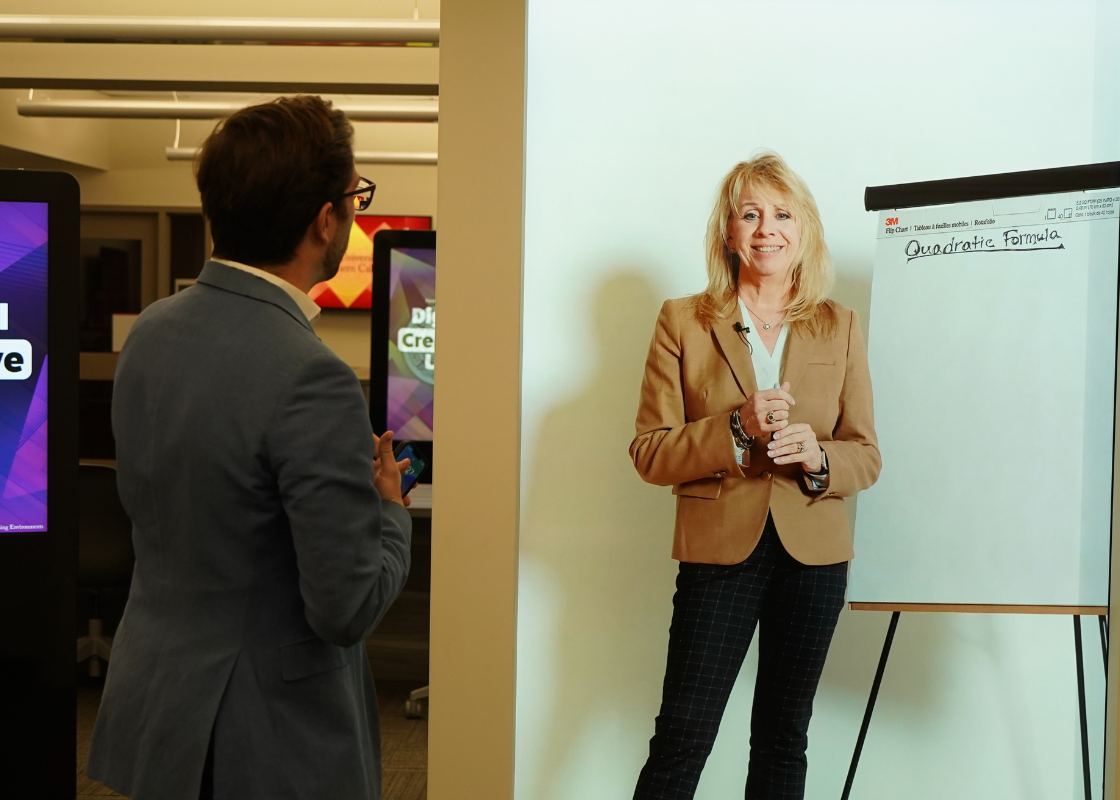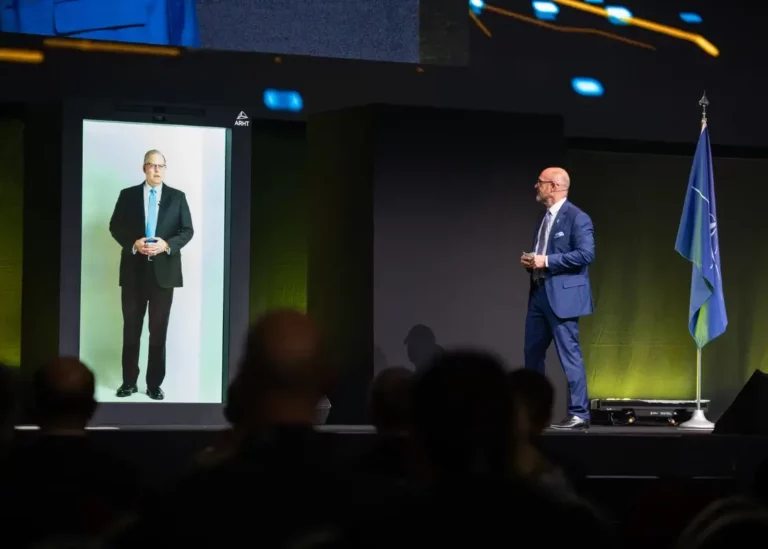Hologram technology has rapidly advanced in the last 15 years, and today is a truly innovative solution that is being used across multiple industries, including education. The introduction of holograms as part of immersive learning, collaboration, and information-sharing strategy is allowing students, faculty, and administrators to increase the emotional connection in an interactive digital environment that emulates true in-person, human connection and engagement. Integrated into both hybrid and traditional classrooms, holograms can deliver many benefits. Everything from improving learning outcomes and increasing student attraction and retention to helping institutions be more sustainable and innovative, holograms make a significant difference in the quality of the digital options for your teaching, learning, administrative, and research interactions and collaborations.
Meaningful Learning Through Holograms
When you’re having a conversation with someone, it’s the nuances of their body language and facial expressions that really help you to process the conversation better and feel a connection with both the person delivering the message and the information they are sharing. This is crucial for a successful learning process. Additionally, millennials and Gen Z are the first generations to have grown up in a digital world, with reduced attention spans and heightened expectations of technology. Their unique learning style requires education systems to develop new approaches that meet their evolving needs for engaging digital content.
Thanks to holographic technology, you can have a full 3D image of the person with their full facial countenance, body movements and gestures, and articulation, creating that human connection necessary for meaningful learning. By communicating with a “real” person, in life-size, albeit through a digital platform, students can relate to the instructor and the material much better than they may in a flatter, 2D format. This helps whoever is on the receiving end of the hologram gain a better understanding of the subject and makes the experience much more enjoyable. Additionally, when adding dynamic high-resolution 3D images to their presentations, speakers enable viewers to process complex concepts better and engage more with the topic.
This technology adds more essence to remote learning brought about by the COVID era. It can be used in a hybrid fashion, combining in-person and online experiences in a single session. For example, a professor studying sustainability in a rainforest location can connect as a hologram to other groups of students and colleagues in real-time in any other part of the world, expanding the experience beyond the location and broadening the learning opportunities.
Going Green
Holograms offer a greener way for people to connect and communicate life-size and in person without physically traveling from A to B. A professor in Sydney, Australia, could be a guest lecturer at a university in New York in a matter of moments. Their lecture could be recorded and used as part of a more extensive content library available on-demand to many other students, faculty, administration, and/or researchers.
On an institutional level, when international universities adopt hologram technology, they can create a private network to facilitate collaboration between people on different campuses and locations while reducing their carbon footprint. Leaders of universities, such as Chancellors and Provosts, can give speeches and have live conversations with all their campuses locally, regionally, and globally, concurrently via a hologram without having to travel to each location individually, saving not just travel-related expenses but time resources too.
Universities Paving The Way
If by now you’re very much intrigued by the fantastic benefits that holograms can bring to educational institutions, then you’re probably curious about examples of real schools applying this unique technology. Here are three universities that are already shaping the future of education by leveraging ARHT holographic technology:
- University of Southern California (USC), where holograms take center stage in creating highly interactive and engaging learning experiences that connect on-campus and remote students. With ARHT CAPSULE, students can fully engage with their teachers and professors, seeing their facial expressions, body movements, and gestures in intricate detail. By using holograms, USC has taken remote learning to a whole new level, proving holographic communication is more effective for understanding complex concepts. Not only does it greatly enhance the student experience, but it also helps teachers create dynamic and interactive 3D presentations.
- Moving on to IMD Business School, which is also taking the lead in using hologram technology to activate and engage its students. With ARHT Capture Studio and ARHT screens in Lausanne and Singapore, IMD’s faculty and guest speakers can project life-size, life-like holograms in classrooms and meeting rooms on both campuses. Engaging with experts in this way significantly improves student engagement and retention levels while reducing the need for travel. This allows faculty to engage with a wider range of participants, creating more in-depth learning journeys in sustainable business transformation, for example.
- Finally, HEC Paris and HEC Qatar are using holographic technology to connect their two campuses, breaking down geographical barriers between regions and fostering increased collaboration and knowledge-sharing. The ARHT team helped HEC to install far-reaching internal hologram networks in order for students and educators to connect anytime. During the official inauguration, HEC Paris and Qatar connected via holographic technology for the very first time, creating a ground-breaking and technologically advanced approach that paved the way for smoother interaction and better learning outcomes.
Attract Prospective Students with Innovative Solutions
In a competitive environment where institutions compete to get the attention of future students, investing in an innovative approach with technology that creates immersive experiences for students is appealing and can be a crucial element to gaining a competitive edge. Showcasing the use of holograms during campus tours can put your school higher on prospective students’ lists. Adding innovative solutions to your programs and communication sets you apart from other institutions as a future-ready organization that embraces change.
As technology continues to grow and advance, holograms are catching up with the needs and expectations of educators and students. From remote learning to global connectivity, it has the potential to transform the landscape of education, making it more accessible and engaging for students. With ARHT’s cutting-edge holographic solutions, universities like USC, IMD, and HEC Paris/HEC Qatar, are at the forefront of this exciting new development, shaping the future of education.
Ultimately, this new way of learning and communicating enables us to create a deeper human connection in our interactions, which is essential for meaningful learning. With holographic technology becoming more prevalent in educational environments, students will receive unprecedented and incomparable learning experiences that will help them become the highly skilled workforce of tomorrow.






